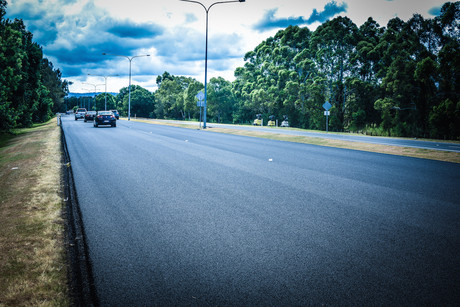New road specifications could give new life to old tyres

Millions of waste tyres could soon quite literally find themselves back on the road — as part of Australia’s road infrastructure.
That’s one of the objectives of new national specifications for crumbed rubber modified (CRM) asphalt, published in early June and achieved through the work of the Australian Asphalt Pavement Association (AAPA) and Tyre Stewardship Australia (TSA). The work undertaken to reach the national specifications emerged from the dual demands to find local sustainable solutions for end-of-life tyres and to codify the beneficial use of crumbed rubber road products, thus increasing their take-up across the vast Australian road network.
The specifications were developed through the acquisition and analysis of vast amounts of research and development data necessary to achieve cohesive national standards, for use across the country. The document was published by the AAPA national technology and leadership committee to facilitate the construction of demonstration trials of CRM gap graded asphalt (GGA), as well as to promote the wider use of CRM open graded asphalt (OGA) in Australia.
The crumb rubber modified binder technology in the specification is based on the technology used in California and Arizona. The CRM OGA mix design process in this specification has been validated through demonstration trials in Queensland, with the first demonstration section of CRM GGA placed at the Gold Coast on 28 June.
The new national specifications for both OGA and GGA applications, and for crumbed rubber spray seal, could eventually see nearly 10% of the accessible feedstock for tyre-derived crumb rubber produced in Australia consumed in domestic road manufacturing. That equates to the consumption of nearly 4 million end-of-life tyres per year.
Initial research indicates that this would represent a doubling of utilisation of recycled crumb rubber over current consumption levels. Using the new national specifications, state road agencies will be able to set a consistent standard for crumbed rubber road products in both metropolitan and regional applications.
The benefits of using both CRM asphalt and spray seal have been known for some time, particularly for rubberised spray seal, given it has been in wide use across some states’ rural and regional highways for decades. CRM asphalt can offer better drainage, reduced noise, improved rut and crack resistance, and reduced maintenance cycles, while rubberised spray seal has delivered superior durability, better drainage and noise reduction.
Now the national specification for both CRM asphalt types and spray seal will allow engineers and roads contractors to work within known parameters to deliver the benefits such products can offer.
“Reaching a national standard has been a critical part of increasing the potential market for crumb rubber use in Australian roads,” said TSA Market Development Manager Liam O’Keefe. “To fully realise this potential for that use, we must continue to work with industry partners to ensure the delivery of better roads and better environmental outcomes for all.
“The important next phase of the task is ensuring that the new specifications are used. As utilisation of the new specifications grows, so too will the benefits to the end-of-life tyre industry.”
The new national specifications can be found on the AAPA and TSA websites.
NSW initiative tackles food waste at the source
Approximately 1.7 million tonnes of food waste is sent to landfill in the state each year.
NSW celebrates recycling triumph
Considerable progress has been made in the New South Wales recycling sector, with the state now...
REMONDIS expands into Western Qld
The Australian branch of the German multinational, which specialises in recycling, industrial...









